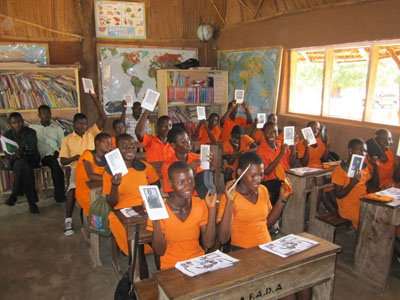Omar, 19 years old and living in an urban slum in India, is an early mobile internet user who repairs mobile phones in his brother‘s store. “This is magic in my palms,” he says valuing the weight of his mobile phone, not only in his hands, but in his day-to-day life. “God knows what I would do without this. I download songs and listen to them all day, I download movies and watch them in the night when I get back home, I play games in between servicing client, I change my internet plans as and when I come across a great one that gives me the most for the least.”
Omar is certainly not the only teenager in his slum who is fascinated with mobile technology. It’s this appreciation for ICT and its various uses for finding comfort — a way of managing and building personal technology infrastructures as an important element in conducting one’s own life — that Microsoft researchers wanted to portray in a new report, Anthropology, Development and ICTs: Slums, Youth and the Mobile Internet in Urban India. The report aimed to bring awareness to the ICT for development (ICT4D) community of the important insights that be gained from anthropological studies within an understanding of what drives a specific user population to adopt technologies in specific ways: even if the latter is only for entertainment purposes.
Researchers observed how twenty underprivileged teenagers living in a slum used ICT in their day-to-day lives by employing a variety of qualitative methods, including open-ended interviews, observations of community life, and semi-structured baseline surveys. They focused their findings on:
1) Investigating everyday entry points for internet use
2) Identifying ways the internet is understood, accessed, used and shared in multiple ways among the user population
3) Qualifying the social paths sustaining the persistence of internet use among teenagers in a constrained infrastructural environment — specifically that of an urban slum.
The report offers a fascinating anthropological view of how ICT could, and perhaps should, be seen by the ICT4D community:
“If constrained technology environments such as urban slums or how youth use ICTs are legitimate interests for ICTD research, such concerns could pave way for a subtle yet vital exchange between the domains of anthropology and development with the aim to expand a utilitarian notion of ICTs and their role in human progress.”
With so much focus being given to ICT for education initiatives, this leads us to wonder: Should technology be introduced into communities where ICT has not yet been adopted? Or is it better that we first observe how technology is already being used, such as use of mobile phones, and structure our education programs around these pre existing uses? The report suggests the latter and encourages ICT4D developers to consider all of the ways technology is already being used even if it doesn’t have the direct effects that we anticipate or fit a preconceived definition of “development”.
“Indeed, this may require us to broaden our view of how we think about what underlies a good ICTD research project and how we view a range of human behaviors as incremental to development. Rather than using the internet to search for educational material, the youth in our study search for music and Bollywood teasers. These are hardly developmental in any conventional sense, but more akin to behaviors of youth in any part of the globe! No doubt what begins as entertainment can lead to more serious activities.”
The report is certainly a welcome and valuable resource to developers in the ICT4D community. The full report can be accessed here.





















































